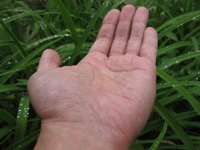A delayed St. Patrick's Day party: playing tin whistle and alto recorder
Since so many people couldn’t make it to Henry’s St. Patrick’s Day party, Henry threw another party two weeks later, a second St. Patrick’s Day party! Abby and I attended this one too.
This was another huge milestone for me, musically.
Chess
Henry has been playing chess very well lately in tournaments. In fact, last weekend in the big-money Pittsburgh Open, he actually tied for first in his section, winning $630, with a record of four wins and one draw, his best tournament in his life!
He sent me his games from the Pittsburgh Open, which I carefully analyzed and sent back to him with my annotations, just before the party. This was the first time I’ve analyzed games in well over a year. Doing it again sent the thrill of chess back into me. I thought I was done with chess, but now I’m vicariously living tournament chess through Henry. And I very much enjoying analyzing chess games.
Music preparation
I have learned by now that “preparation” when it comes to jamming does not amount to figuring out a few pieces. It means bringing a bunch of stuff and then figuring out what people want to hear or play with you, and then basically sight reading on the fly.
So an important part of my music practice nowadays is sight reading. I keep a big pile of music that I use simply to sight read.
Because I felt still unready to play flute at a standard I found sufficiently acceptable to believe that people could take real pleasure in my playing, I decided not to bring my flute this time. I brought my tin whistle and recorders.
Tin whistle
For tin whistle, I brought some big compilations of Irish music from the Carnegie Library, both fast and slow. I especially like slow Irish airs, not only because they’re slower and therefore “easier” to play, but because they are actually “hard” to play, in that you really have to pour yourself into expression and emotion; it’s actually easier to play fast music because you can cover up by just playing a lot of notes.
Alto recorder
I also brought a collection of Telemann minuets arranged for alto recorder and keyboard that I got out of the library as well. I have recently been getting a lot into Baroque music.
At the party
Chess
It turned out that David, a guy Henry knew from the Pittsburgh Chess Club tournaments, came to the party, so we spent a bit of time going over some recent games of theirs.
Music jamming
I felt much more comfortable than at the last party, since I was getting to know everyone, and I had not been “punished” in any way for my fumbling performances, but actually encouraged to keep playing.
I did soloing on tin whistle with slow Irish airs, and also did impromptu fast jigs and reels with Henry and Vassily.
But what I enjoyed most was going through minuets with Henry at the piano while I played alto recorder. This being Baroque music, there was ample space for ornamentation on both parts. I have been working on the art of Baroque ornamentation, and was excited to let myself free during the repeats of the minuets we read through. At one point, Henry complimented me on my ornamentation, and I silently beamed. It’s a continual process, learning the art of ornamentation, because although there are some rules and guidelines, a lot is, as they say, a matter of having “good taste”. You want to do something interesting, but not too much, and not too distorting of the original. It’s tricky finding the right personal balance.
Abby brought her various tamburas and mandolin to play and show Vassily.
Conclusion
I had a great time again at another of Henry’s parties. Great food, great company, fun playing music and talking chess.
